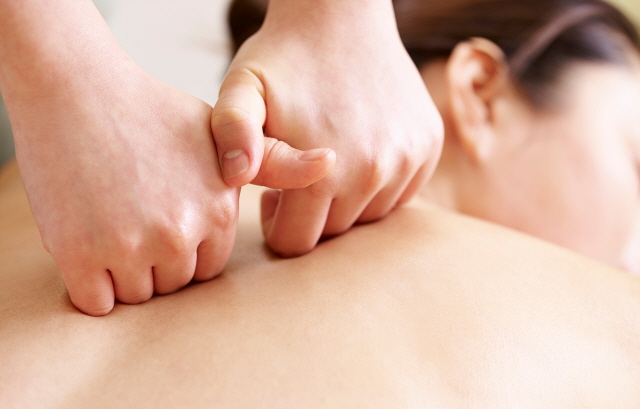Written by Jeonghwa Lee, Choonjae Lee, Published by Korea Institute of Oriental Medicine
F. Tuina / Massage
Tuina is a manual therapy among several branches of Oriental medicine. Chinese medical classic Hwangjenaegyeong calls it doin and angyo. Among them, angyo was changed to anma, which was again changed to tuina. In Dongeuibogam, tuina is described by the name of angyo, doin, anma, etc.
In Korea, tuina therapy has declined without notable prosperity. It was probably because the social atmosphere in the Chosun Dynasty did not tolerate the exposure of the body and the sitting of men and women together. Furthermore, due to the tendency of respecting scholars, manual labor was despised, and thus hindered the development of the method in which hand skills are applied. For these reasons, throughout the Japanese imperialism, tuina therapy became merely a folk remedy rather than a medical practice.
Today, however, tuina is again gaining in popularity. The Tuina Society was launched officially as a division of the Association of Korea Oriental Medicine, and tuina was legalized as a separate manual therapy of Oriental medical practitioners.
According to the definition by the Tuina Society, tuina is an Oriental medical practitioner’s manual therapy applied to patients, which is categorized as an external therapy of Oriental medicine. Tuina attains positive effects of treatment by manipulating specific parts of the patient’s body (acupoints on the skin, tender points on fascia, spine, joints, etc.) and controlling the physiological and pathological situation of the human body using the practitioner’s body parts including the hands and assisting tools.
Tuina therapy does not have toxicity or side effects as in medicine, and immediately makes the patient feel comfortable during the process of treatment. What is more, tuina treatment shows excellent effects in treating many diseases. Thus, tuina medicine is believed to have a bright future.
G. Folk Therapies
Medical experiences have been accumulated through long history since ancient times as human beings execute various methods to protect human lives, treat diseases, and promote health. In the course, TKM has established medical philosophies based on knowledge it has obtained from the change of the natural world.
In addition, based on the medical philosophies, theories have been derived and practical clinical procedures were defined and all these have formed today’s TKM. TKM can be defined as medicine developed by systematizing experiences from ancestors into principles and theories and developing them into today s medical theories and technologies. In addition, it is very valuable traditional medicine that has created and refined new theories based on sciences, philosophies and techniques from old teachers.
The definition of TKM can be divided into two stages. The stage of accumulating experiences from last generations is called the stage of folk therapy, and the stage of developing accumulated experiences into scientific principles and theories and furthermore into contemporary medical theories and technologies is called the stage of future-oriented traditional medicine.
Accordingly, TKM is neither the collection of folk therapies nor elementary primitive medicine but our traditional medicine with scientific system.
Then, how have folk therapies been developed?
Folk therapies originated from unscientific medical acts and experiences to cope with diseases and accidents instinctively without theoretical understanding. At first, they took the form of magical practice, praying to the existence of supernatural beings and believing the healing works of natural objects. In addition, like animals do instinctive medical acts to treat wounds in their bodies, human beings also repeated medical acts for survival according to their instinct and in the course they accumulated knowledge and found methods.
What is more, they came to be able to distinguish edible and inedible things, and furthermore discovered that some materials could be used not only as food but also as a remedy for diseases. In this way, people experiences in diseases and treatment accumulated and as a result folk therapies came to exist.
Then, how is folk therapy distinguished from TKM in terms of the administration of medicine for treating diseases? Folk therapy administers one or two kinds of medicine according to accumulated experiences based on the patient’s complaints and symptoms, and then expects to get effects.
Different from folk therapy, however, TKM administers several kinds of medicines in appropriate dosage based on established medical principles. Then, a remedy prepared by the prescription is applied to the patient. That is, TKM considers not only the properties and efficacies of each of different medicines but also their synergy for a higher effect based on Korean traditional medical principles.
Accordingly, TKM has more advanced systematic principles than folk therapies, which depends on people’s experiences without knowledge and principle.
In addition, it has developed sub-areas such as herbal pharmacology that studies medical materials and pharmacology and prescription science that combines medical materials based on principles.

































